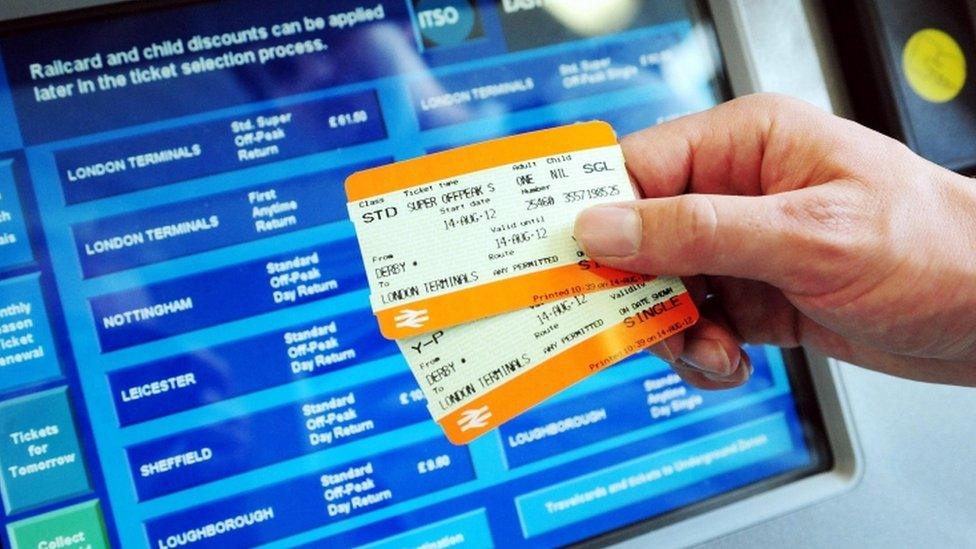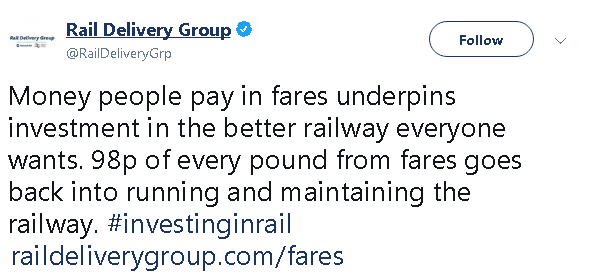Reality Check: Where does your train fare go?
- Published

Millions of commuters will be paying an extra 3.1% for their train tickets next year, following an announcement by the Rail Delivery Group - which represents the train operating companies.
The decision to raise fares comes after months of disruption following problems with new timetables in May.
But operators say the vast majority of fare income is invested back into the network.
So how is it worked out?
Passengers in Great Britain spent a total of £9.7bn, external on fares in the year ending March 2017.

On top of that, passengers spent £800m on other things, like on-board catering.
Adding the two together, total train operator income was £10.5bn in 2016-17.
When it comes to outgoings, the Rail Delivery Group says its running costs were £10.3bn.
This means the train companies spent 98% of the income they received, with 2% left as profit.
But what exactly are the running costs incurred by train operators?
The Rail Delivery Group has produced its own breakdown. It's based on research it commissioned from the Railway and Transport Strategy Centre at Imperial College, London.

The biggest proportion (35%) went on a category marked "other".
BBC Reality Check asked the Rail Delivery Group what this included. We were told it was maintaining and cleaning the trains, providing security (such as CCTV) as well as administration and contractor costs.
The next highest spend was on "staff" (25%).
The Rail Delivery Group hasn't provided us with its full analysis, but Reality Check compared its breakdown with data from the industry regulator, the Office for Rail and Road (ORR).
And the ORR's data, external backs up the Rail Delivery Group's claim - that train operators spent 98% of their total income on running costs.
However, the data also shows that passenger fares only cover day-to-day running costs, and not longer-term investment.
The Rail Delivery Group says that in the past general taxpayers - rather than passengers - bore the brunt of the day-to-day costs.
Future investment
The Rail Delivery Group is also keen to point out that "the money people pay in fares underpins investment in the better railway everyone wants".
So what are they planning?
7,000 new train carriages have been pledged by the the Rail Delivery Group for 2021. These will support an additional 6,400 services a week.
But the funding for this isn't actually coming from the £10.5bn of passenger income.
The total upgrade package is worth £50bn, of which £11bn will come from the private sector, and the rest from the taxpayer.

